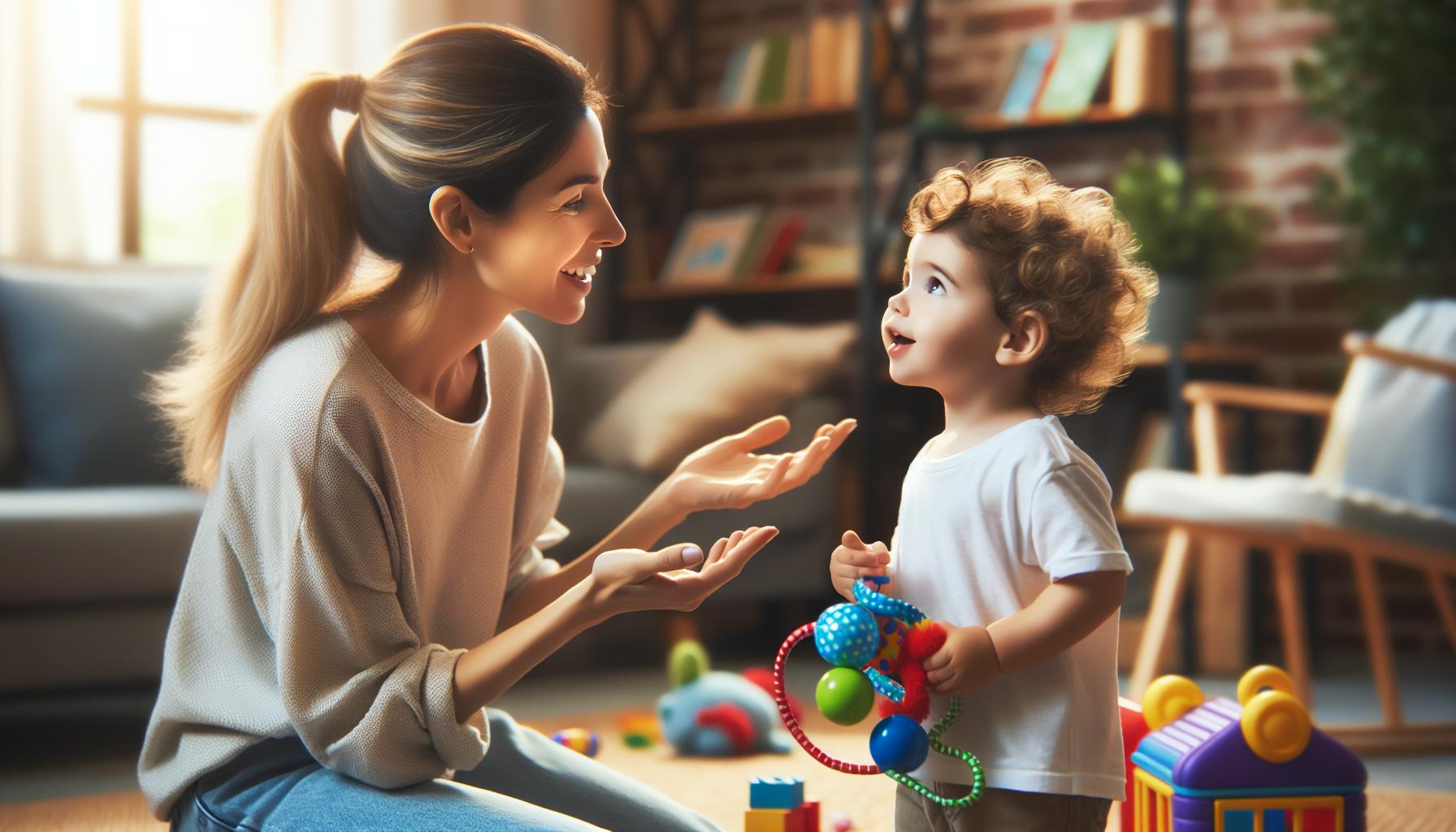Navigating the world of parenting can be both rewarding and challenging, especially with a lively two-year-old in the mix. At this age, children are bursting with curiosity, energy, and a desire for independence. Understanding their needs and behaviors becomes crucial for fostering a nurturing environment.
Being a good parent to a two-year-old means embracing their developmental milestones while setting boundaries. It’s about balancing patience with guidance, creating a safe space for exploration, and building a strong emotional connection. With the right strategies, parents can encourage positive behavior and support their child’s growth during these formative years.
Key Takeaways
- Understanding your two-year-old’s developmental milestones—such as language, motor, social skills, and independence—is key to effective parenting.
- Employ effective communication techniques, including active listening and the use of simple language, to foster a strong emotional bond.
- Establish consistent daily routines to create a sense of security, predictability, and structure for your child’s growth and development.
- Implement positive discipline strategies by setting clear boundaries and reinforcing good behavior to nurture understanding and compliance.
- Engage in a variety of play activities that stimulate curiosity, enhance motor skills, and promote social interactions, ensuring a well-rounded development.
How to be a Good Parent to a 2 Year Old
Understanding a two-year-old involves recognizing their developmental stages and common behaviors. This knowledge allows parents to respond effectively to their child’s needs.
Developmental Milestones
Two-year-olds typically experience rapid cognitive, emotional, and physical development. Key milestones include:
- Language Skills: Vocabulary expands to about 50 words, including simple phrases. They often start combining words, forming basic sentences.
- Motor Skills: They exhibit improved coordination, enabling them to run, climb, and manipulate objects with greater precision.
- Social Skills: Interaction with peers develops, promoting sharing and parallel play. They begin to express emotions like joy, frustration, and anger.
- Independence: A desire for autonomy emerges, leading to defiance and testing limits. They often say “no” frequently during this stage.
Common Behaviors
Understanding common behaviors aids in managing expectations. Notable behaviors include:
- Tantrums: Frustration can lead to meltdowns over small issues like toy disputes or meal preferences. These outbursts typically stem from limited communication skills.
- Curiosity: An innate curiosity drives exploration. They often ask questions or touch everything in sight, creating a need for supervision and safety measures.
- Imitation: Two-year-olds learn through imitation. They mimic adults, demonstrating behaviors and language they observe, highlighting the importance of modeling positive actions.
- Routine Preference: Consistent routines provide a sense of security. They often express distress when routines are disrupted, indicating their need for predictability.
Recognizing these developmental milestones and behaviors helps parents create a nurturing environment that supports their child’s growth and exploration.
Effective Communication

Effective communication fosters a strong bond between a parent and a two-year-old. Utilizing clear strategies enhances understanding and expression during this crucial developmental stage.
Active Listening Techniques
- Maintain Eye Contact – Engaging visually shows attentiveness. It encourages the child to feel valued during discussions.
- Repeat and Reflect – Repeating what the child says reinforces their message. Reflecting on their feelings demonstrates comprehension and empathy.
- Use Simple Language – Employing age-appropriate vocabulary aids clarity. Short and straightforward phrases enhance understanding.
- Pause and Wait – Allowing moments of silence gives the child time to think. Waiting patiently encourages them to articulate thoughts without pressure.
- Respond Appropriately – Acknowledge emotions and opinions. Validating their feelings promotes confidence in sharing ideas.
- Offer Choices – Providing options empowers decision-making. Simple choices, like selecting snacks or outfits, foster independence.
- Use Visual Aids – Incorporate pictures or gestures to illustrate concepts. Visual aids enhance comprehension and engagement.
- Encourage Play – Creative play enhances expressive skills. Activities like role-playing or storytelling invite imaginative communication.
- Model Expression – Demonstrate appropriate ways to express emotions. Sharing personal feelings in context teaches them to communicate openly.
- Create a Safe Environment – Establishing a supportive atmosphere encourages sharing. Comfort enables the child to express thoughts without fear of judgment.
Establishing Routines

Establishing routines enhances security and predictability for a two-year-old. Consistent schedules foster a sense of stability that supports their developmental needs.
Importance of Consistency
Consistency in routines promotes understanding and safety. Familiar patterns help a child anticipate daily activities, reducing anxiety and defiance. Regular meal times, bedtime rituals, and play schedules guide behavior, leading to less resistance and more cooperation. For example, a consistent bedtime routine involving a bath, storytime, and lullabies signals to the child that sleep is imminent, making transitions smoother. Adhering to established routines helps reinforce expectations and empowers the child to navigate their environment with confidence.
Creating a Daily Schedule
Creating a daily schedule involves outlining specific activities throughout the day. A structured timetable includes key elements such as:
- Meal Times: Regular breakfast, lunch, and dinner times provide necessary nutrition and establish a rhythm.
- Naptimes: Allocating time for naps helps manage energy levels and improve mood throughout the day.
- Play Sessions: Designating periods for free play encourages exploration and creativity while developing motor skills.
- Family Activities: Scheduling family engagement fosters bonding and provides opportunities for social interactions.
- Screen Time: Limiting screen time to specific intervals balances technology use with hands-on activities.
Implementing a daily schedule involves flexibility to adapt as needed. Keeping activities age-appropriate ensures that the child remains engaged and satisfied. Regularly reviewing the schedule helps identify necessary adjustments, fostering a supportive structure that benefits the child’s growth and development.
Positive Discipline Strategies

Effective discipline strategies promote a child’s understanding of boundaries and reinforce positive behaviors. Approaching discipline with patience and consistency helps nurture a well-adjusted two-year-old.
Setting Boundaries
Setting clear boundaries establishes a framework for acceptable behavior. Parents should create simple, specific rules that align with the child’s developmental stage. For example, designating play areas or limiting screen time communicates expectations effectively. Consistency in enforcing these boundaries remains crucial; when rules are consistently applied, children grasp their significance. When boundaries are tested, calmly reminding the child of the rules reinforces understanding. Using positive language helps maintain a focus on desired behaviors rather than just prohibitions.
Reinforcing Good Behavior
Reinforcing good behavior cultivates a positive environment. Praise and acknowledgment should follow specific actions rather than general statements. For instance, saying, “I love how you shared your toy!” promotes continued sharing. Rewards like stickers or a special activity serve as additional motivation for desirable behaviors. Offering choices empowers the child, making them feel involved in decision-making. For example, asking, “Do you want to wear the red shirt or the blue shirt?” encourages autonomy. Highlighting positive behaviors through consistent reinforcement fosters self-esteem and encourages further compliance with established boundaries.
Engaging Activities
Engaging activities provide essential support for a two-year-old’s development. These activities stimulate curiosity, enhance motor skills, and foster social interactions.
Play Ideas for Development
- Stacking Blocks: Encourage the child to build towers with blocks. This activity improves fine motor skills and hand-eye coordination.
- Water Play: Provide a shallow bin filled with water. Use cups and toys to promote sensory exploration and creativity while enhancing motor skills.
- Pretend Play: Incorporate dress-up clothes or kitchen sets. Imaginative play allows for social development while fostering language skills.
- Art Projects: Offer crayons, markers, or finger paints. Creative expression through art improves cognitive development and fine motor abilities.
- Nature Walks: Explore parks or gardens while identifying plants and animals. These outings enhance language skills and foster a sense of curiosity about the world.
- Reading Together: Select age-appropriate books with colorful pictures. Reading not only improves language skills but also strengthens the emotional bond between parent and child.
- Sing Songs and Rhymes: Use engaging songs and nursery rhymes. Singing fosters language development and provides a rhythmic structure that captures attention.
- Games of Imitation: Encourage the child to mimic actions or noises. Imitative play supports social learning and understanding of cause-and-effect relationships.
- Sorting Games: Utilize objects of different shapes, sizes, or colors. Sorting boosts cognitive development and enhances problem-solving skills.
- Fingerplay Activities: Engage in hand movements associated with songs. Fingerplays improve vocabulary and promote physical coordination while being entertaining.
Navigating The Journey of Parenting
Navigating the journey of parenting a two-year-old can be both rewarding and challenging. By fostering a strong emotional bond and creating a supportive environment, parents can encourage their child’s growth and development. Understanding their unique needs and behaviors is essential for effective communication and positive discipline.
Establishing routines provides stability while engaging in creative play nurtures curiosity and motor skills. With patience and consistency, parents can guide their children through this critical stage of independence and exploration. Embracing these strategies not only enhances the parent-child relationship but also lays a solid foundation for future growth and learning.